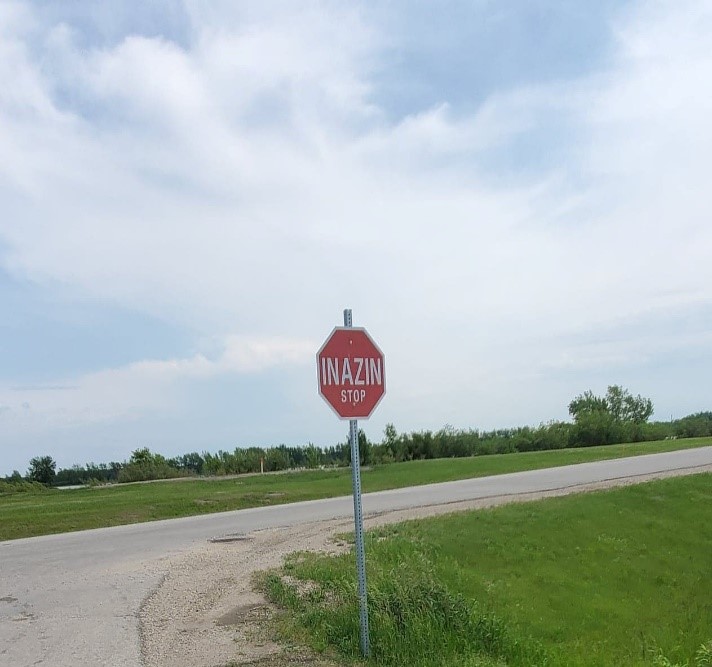Dakota Language Speakers – Dakota Tipi First Nation & Sioux Valley Dakota Nation
Diane Smoke
Dakota Tipi, Dakota Language Translator, and Dakota Elder liaison
Current Work
Diane and some other members were involved in the creation a language program with 9 sessions. The sessions included:
- Having a meal together;
- The Elders in the center of the room surrounded by young mothers and adults, youth and children.
The Coordinator guided the session by starting off with a prayer by one of our elders and a blessing of the food. After the meal, materials were handed out and discussions were held.
The Elders shared how to say words in different ways in the Dakota Language. Each word was broken down and translated to English. The young adults would engage in conversation.
As a result of these sessions, the Chief is now able to say prayers in Dakota Language, the kids play in the playground singing Dakota songs. Signage is now in the community, they replaced English signs. For example, stop Signs, Children at play signs. In the office settings, like the band office, posters are shown in the language like “wash hands”, “bathroom” and “open doors” etc.
Current Work
Diane has translated government documents and letters. This was to help the Elders in the community to understand the technical terms.
She was also involved with the Dakota Language “Snake Story” documented with the City of Winnipeg Library. A Legend from Dakota Knowledge Keepers for children.
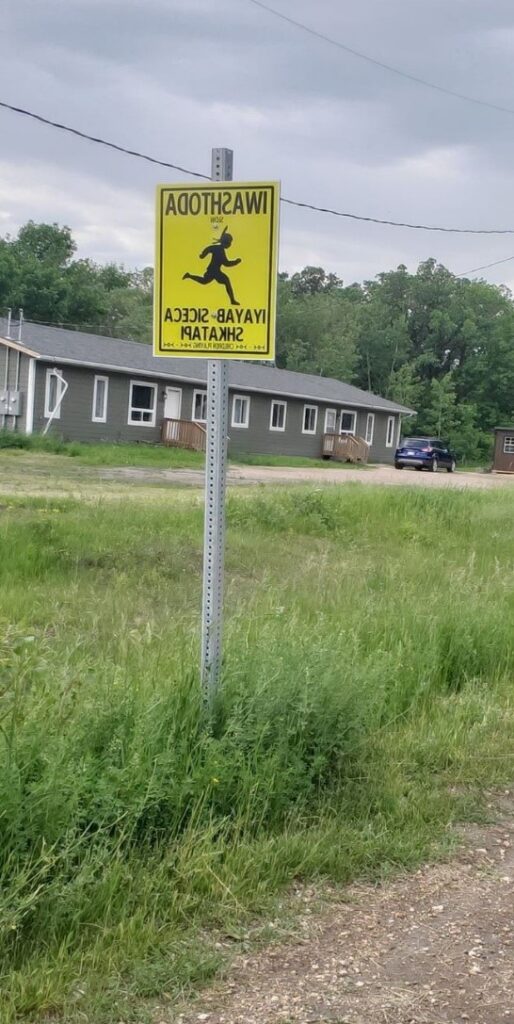
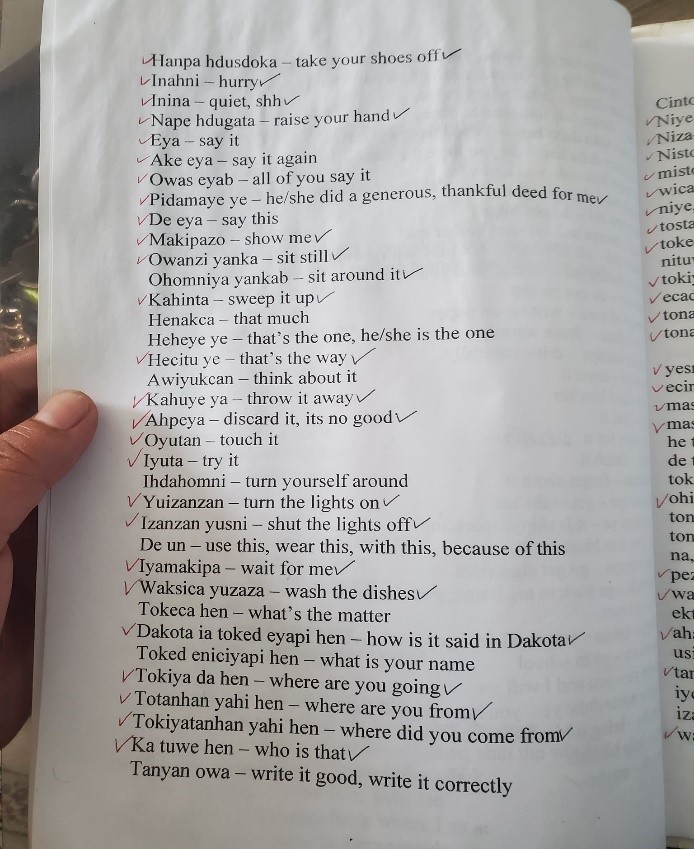
Goals
Diane identified some language goals, which include:
- Gather people- programs begin strong and dwindle down towards the end, when food is provided, more people show up.
- Target small children and school age children- the Dakota language is taught in the schools, they start them in preschool and daycare.
- Support parents in the homes.
- Preserve it so Dakota language does not become extinct.
- To help others (non-Dakota and Non Indigenous) understand the language is important to healing and culture. Language is a way of life. To understand Dakota language is a complex language to understand if you do not live the life style.
- Use more technology, social media, games, apps and websites.
Challenges
Some of the challenges include:
- Keeping people engaged.
- Keeping the program fresh and interesting. With the Dakota language class, there is lower attendance at the end of the program. When the setting is a comfortable setting people tend to be more open to discussions, and get more involved.
- Funding is an issue. The revitalization of Dakota Language is important to our way of life, healing and culture. The language teachers are the Elders and it is bad when we cannot provide them anything after sharing their knowledge. The majority of the time, the teachers are voluntary and do not get paid.
Bridge The Gap
History is significant in restoring languages.
Genealogy workshops would be beneficial to restoring languages. Genealogy is essential to identity and establishes the connection to our culture and language. This helps gain a sense of identity.
With the Dakota Language workshops, create a guide to help people understand the concepts and uniqueness of the Dakota Language. This will help people teach it in their homes.
Time and patience is needed.
“I talked to a group of small children and told them the “Snake Story”, in Dakota and in English. They listened to the whole story! I was so happy to see them listening to me when I talked Dakota to them. To say Children in Dakota is “Wakan Yeja”, Wakan Means “Sacred” and “Yeja” Means “to put upon” they are our future and are sacred to us, when we eat together we serve the children with the elder first. So when they listened to our story in the language I felt there is hope in our future generations and I believe our language will come back to us” – Marina James, Dakota Tipi Elder, 84 yrs old
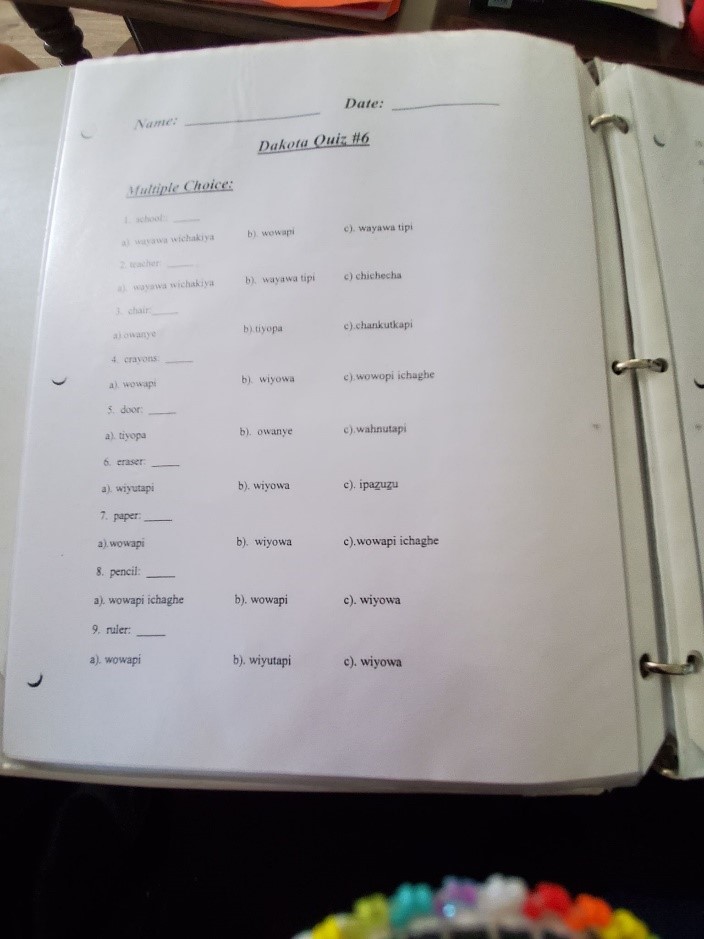
Diane Smoke, Dakota Language Speaker
My name is Diane Smoke “tukanziiyawinya”. (First yellow rock woman.
This is my story of my involvement in the topic of Dakota languages.
Since learning of the urgent situation of Dakota language being on an extinction list, it became a mission of preservation.
From then on it became a committed passion to make efforts to learn more.
A little over a year ago, I had the privileged opportunity to attend the Strengthening and Revitalizing Indigenous Language and Culture conference in Nova Scotia.
Meeting other First Nations people from across Canada listening and sharing stories with one another was a profound amazing experience. I shall never forget, when the conference was over a few of us in the group shared feelings of empowerment and healing strengths on the way home.
I believe this experience became a plan to set some goals to make efforts to discover ways to preserve and maintain our Dakota language
Currently, a small group of women and I that attended have created awareness and encouragement within our communities.
Within our unique communities. I have attempted to voice my concerns regarding this dire situation concerning Dakota languages
I believe this requires patience and open mindedness therefore time is precious.
Hopefully, this group will continue to gather and grow to struggle and endure our efforts to maintain our Dakota language
My story will continue but for now sharing a small part of my goals and intentions with others has created within myself motivation to continue to support and encourage Dakota languages.
Being part of the elderly generation and meeting other First Nations people teaches me that there are strengths in numbers and we all need to part of the solution, for our grandchildren.
Mitakyewasin.
“On this day of the interviews, I felt I was privileged to take part in these discussion. I learned from the ladies the complexity of Dakota Language. We discussed protocol and I knew I had to take the holistic approach and follow protocol. I needed my Kunshi and Ina (Grandmother and mother) to help me access the language keepers and get me in the door. I learned our language is not just a language used for communication, I learned it is a way of life. As I sat there listening to the conversation in Dakota I could understand what was being said, even though I am not a fluent speaker. They showed me that our language comes from our mind body and spirit. And if we live the way of life as a Dakota then we can understand it. I was amazed and am very thankful for taking part in this process. And being exposed to my rich culture and beautiful Language. I came out with a more clear understand of our language and way of life as Dakota people on this planet. Pidamaye.”- Miranda Smoke
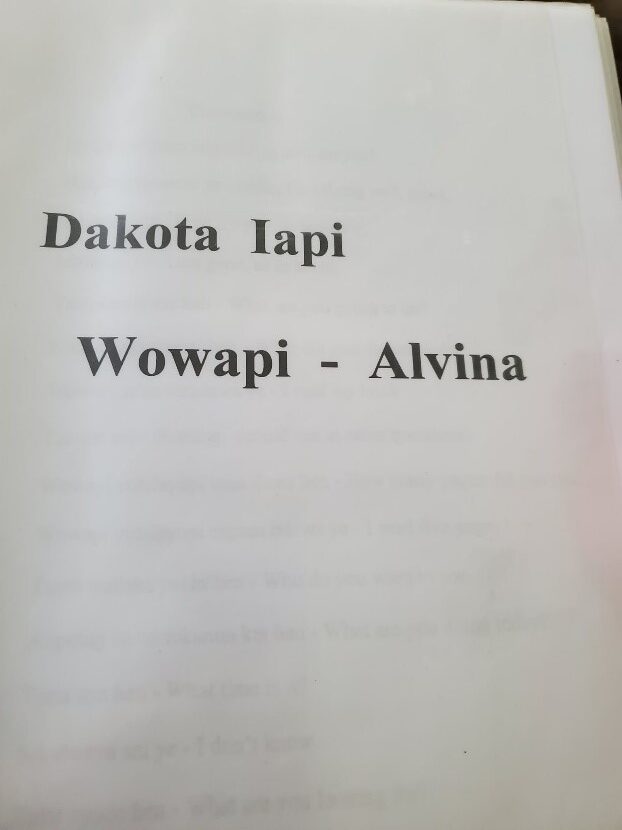
Alvina Ross, Dakota Language Speaker
Alvina Ross,
Sioux Valley Dakota Nation, Dakota Language Teacher
The Work
Alvina is a Dakota Teacher in the community of Sioux Valley and other Dakota Communities. She does Dakota language via classes and social media. She was a Dakota language radio host in her community. She worked as a Dakota language consultant in Granite Fall, MN. She had a voice over in Dakota Language called Iyohpiya Wichohan Ićicupi wowapi numpa @ www.Wildarchaeology.com and APTN
Resources
The following resources were completed:
- Voice Over documented at wildarchaeology.com.
- Booklets with cassette to help with pronunciation. Copies are not available at this time.
- Facebook posting in Dakota language on a daily basis, follow the lessons at Alvina Ross.
Goals
The following or goals Alvina is working towards:
- Target the daycares and schools in the Dakota Communities.
- Preserve and revitalize the Language and Culture for future generations
- To help others understand the language comes from our mind first, then goes through our hearts, and comes out of our mouths. It comes from our whole physical body, mind and spirit.
- Create an apps, website and more materials, booklets, recordings and videos.
Challenges
Some of the challenges include:
- Young children are on technology too much and this gets in the way when Elders try teach young people. The technology and age gaps need to be addressed.
- Other Dakota language teachers have different style approaches and collaborate Christianity. Based on residential school experience they do not trust language teachers who use Christianity strategies. Some find his a turn off.
Bridge the Gap
To bridge the gap, more supports and funding are needed.
A lot of the time our Dakota language teachers teach on a voluntary basis, some of us cannot afford to supply food and a venue and do it out of our own pocket.
Sharing with others on what works, and does not work, and how to keep the program participant engaged.
